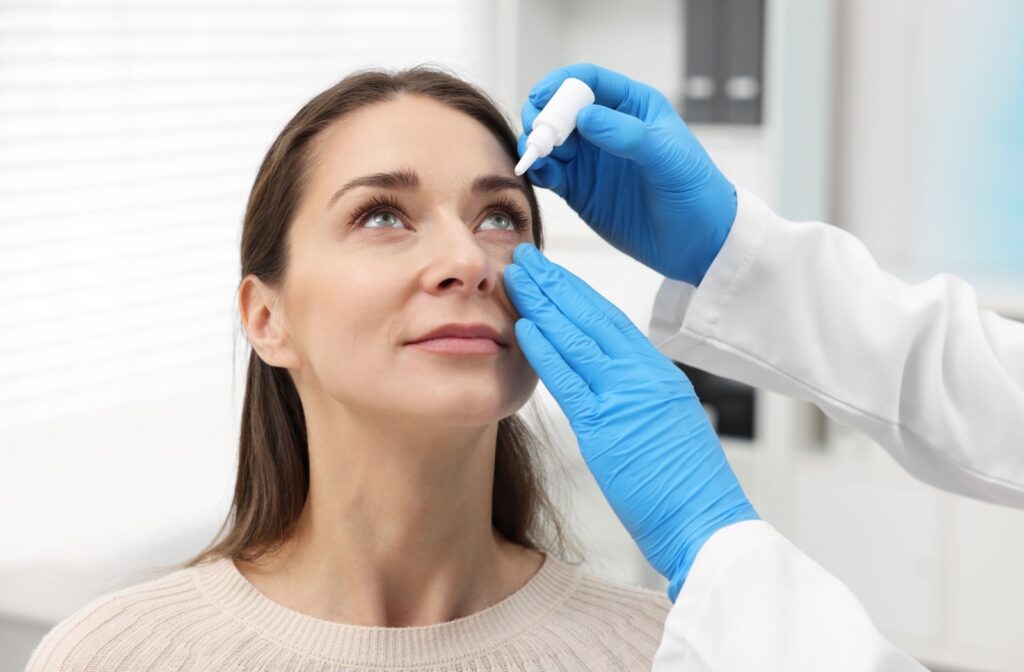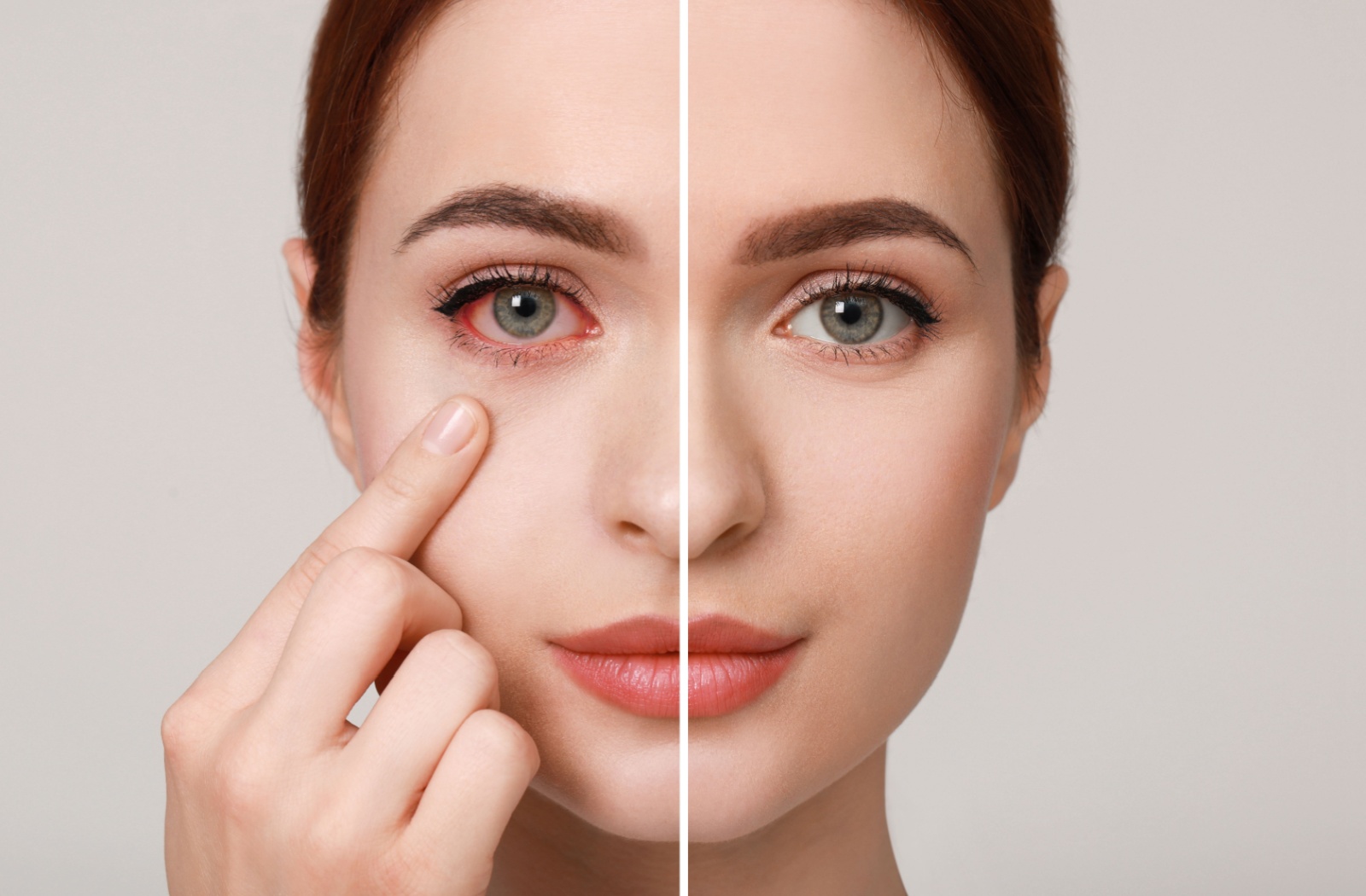If you’ve ever had a sinus infection and noticed 1 or both of your eyes becoming red, watery, or irritated shortly after, you’re not alone in wondering whether there’s a connection. The short answer is: yes, a sinus infection can cause conjunctivitis, commonly known as pink eye.
While it may surprise you, sinus infections are actually 1 of the more common contributors to pink eye, alongside ear infections and respiratory illnesses. But they’re certainly not the only culprits. Let’s explore what conjunctivitis is, how it’s connected to sinus infections, and what you can do to prevent and treat it.
What Is Pink Eye?
Pink eye, or conjunctivitis, is an inflammation of the thin, transparent membrane (called the conjunctiva) that lines the eyelid and covers the white part of your eyeball. This inflammation causes the blood vessels in the eye to become more visible, giving the eye a red or pink appearance.
There are several types of conjunctivitis, but they generally fall into 4 main categories:
- Bacterial conjunctivitis: Often caused by bacteria transferred to the eye from dirty hands, contaminated makeup, or contact lenses. It typically affects 1 eye first and may spread to the other.
- Viral conjunctivitis: Frequently associated with upper respiratory infections like the common cold or sinusitis. It tends to be highly contagious and often affects both eyes.
- Allergic conjunctivitis: Triggered by allergens such as pollen, pet dander, or dust mites. This type is not contagious and usually affects both eyes.
- Chemical conjunctivitis: Caused by irritants like chlorine from pools, smoke, or strong household cleaners.
Symptoms of Pink Eye
While symptoms can vary slightly depending on the cause, common signs of conjunctivitis include:
- Redness or pinkness in the whites of the eyes
- Itchy or burning sensation
- Watery or thick discharge
- Crusty eyelashes, especially in the morning
- Feeling like there’s something gritty or stuck in the eye
- Swollen eyelids
- Sensitivity to light
If the conjunctivitis is caused by bacteria, you may notice more yellow or greenish discharge. Viral conjunctivitis, on the other hand, often accompanies a sore throat, runny nose, or other cold symptoms.
How Can a Sinus Infection Lead to Conjunctivitis?
To understand the connection, it’s helpful to look at the anatomy of the face. Our eyes and nasal passages are closely linked through the tear ducts, which drain tears from the eyes into the nasal cavity. When you have sinusitis—especially a bacterial upper respiratory infection—the congestion and pressure can cause inflammation to spread.
Forceful nose blowing or the backup of infected mucus can cause bacteria or viruses to travel from the sinuses into the eyes via these ducts, leading to pink eye. This cross-contamination is especially common in cases of severe or prolonged sinus infections.
In essence, the same infection irritating your sinuses may find its way to the eyes, causing them to become red, itchy, and watery.

Diagnosing & Treating Pink Eye
Most cases of pink eye are mild and usually go away on their own within a week. However, if the symptoms are severe or don’t improve, it’s important to see a doctor. Treatment depends on what’s causing the pink eye.
If it’s caused by bacteria, doctors often prescribe antibiotic eye drops or ointment. If it’s caused by a virus, it often clears up on its own, but antiviral medication may be needed in more serious cases.
If allergies are the cause, antihistamines or allergy eye drops can help reduce symptoms. If the pink eye is due to chemical exposure, rinsing the eye and avoiding the irritant is the best approach.
If you think your pink eye is connected to a sinus infection, it’s important to treat the sinus problem as well. This might include antibiotics for a bacterial infection, decongestants, or nasal sprays to help clear the sinuses.
Preventing Sinus Infections & Conjunctivitis
Many of the same habits that help prevent sinus infections can also reduce the risk of pink eye:
- Practice good hygiene. Wash your hands frequently and avoid touching your face, especially your eyes.
- Avoid allergens and irritants. Keep indoor spaces clean, avoid known allergens, and use air purifiers when needed.
- Use tissues and discard them after each use, especially when sneezing or blowing your nose.
- Stay hydrated. Drinking water helps maintain healthy mucous membranes in both the sinuses and eyes.
- Support your immune system. Eat a balanced diet, get regular sleep, and engage in physical activity.
Home Remedies for Mild Symptoms
If you’re experiencing mild pink eye symptoms, try the following at home:
- Apply warm compresses: These can ease discomfort and loosen any crusty discharge.
- Use saline eye drops: These help flush out allergens or irritants.
- Clean eyelids gently: Use a clean, damp cloth—1 for each eye.
- Avoid makeup and contact lenses: Until symptoms resolve, keep your eyes clean and free from additional irritants.
When to See an Eye Doctor
While pink eye is usually harmless, there are times when it may be a sign of something more serious—such as a corneal infection or underlying systemic condition. See an optometrist if you experience:
- Severe eye pain
- Blurry vision that doesn’t improve
- Sensitivity to light
- Symptoms that worsen or don’t improve after a few days
- A weakened immune system or pre-existing eye condition
Get Professional Advice from Rutland Optometry
While pink eye and sinus infections may seem unrelated at first glance, they’re more connected than you might think. Sinus infections can lead to conjunctivitis when inflammation or bacteria spread through the interconnected pathways of the face. Thankfully, both conditions are typically easy to treat—and even easier to prevent with good hygiene and self-care habits. If you’re dealing with recurring eye redness or discomfort, it’s important to consult an optometrist to help ensure you get the right diagnosis and treatment. At Rutland Optometry, our team is here to support your eye health with personalized treatment plans. Book your appointment today and see the difference clear vision can make
















